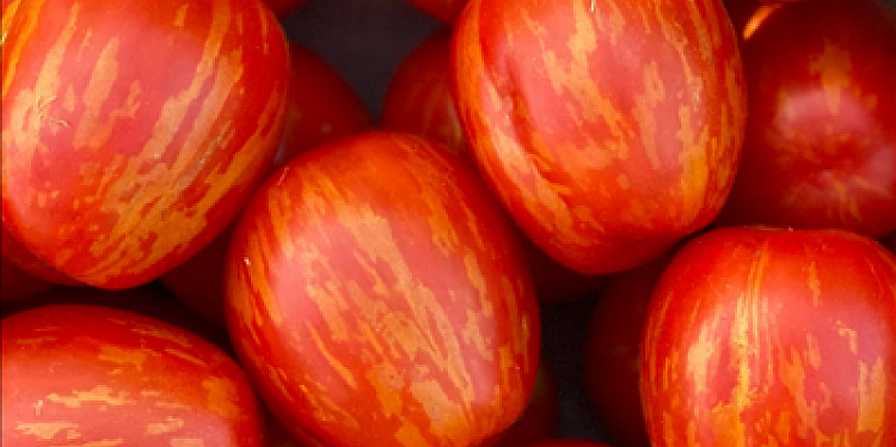What You Need To Know About New Cherry Tomato From Cornell

‘Cherry Ember’ tomatoes feature a unique color striping, along with firmer skin.
Photo courtesy of Fruition Seeds
Red hot off the presses, there is a new variety of cherry tomato igniting interest for growers and consumers alike. The ‘Cherry Ember’ from Cornell AgriTech serves up improved yield and shelflife while also catering to both visual and culinary appeal, according to its developer Phillip Griffiths.
‘Cherry Ember’ is a cross between heirloom tomato varieties. ‘Griffiths, an Associate Professor of horticulture in Cornell’s School of Integrative Plant Science, included plant breeding traits that go beyond looks and taste.
“One of the problems with cherry tomatoes is that they tend to have thin skins, and so half of them crack on the plant, and the half that you pick crack after a few days,” Griffiths says. “’Cherry Ember’ is a little firmer, with more of the postharvest characteristics of a grape tomato.”
Its thicker skin and meatier flesh helps keep the fruit from cracking both in the field and after being harvested — even during high rainfall seasons, which pose problems for selections with thinner skins.
Another bonus for growers is that ‘Cherry Ember ‘ripens just 65 days after being planted and continues to grow until the first frost.
The new tomato is on sale through Fruition Seeds, an organic seed company based in Naples, NY. The company’s co-owner, Petra Page-Mann, had a hand in naming the new cherry tomato variety. Last fall, she launched a naming contest on Fruition Seeds’ Instagram page with Griffiths’ support. After sorting through more than a thousand suggestions and holding a final runoff vote, ‘Cherry Ember’ emerged as the winner.
“It’s a great introduction to life beyond the red tomato,” Page-Mann says. “It’s like a classic red tomato in terms of flavor, but there are brighter notes, especially if you let it sit on the vine. Then you get bright fruit flavors.”










